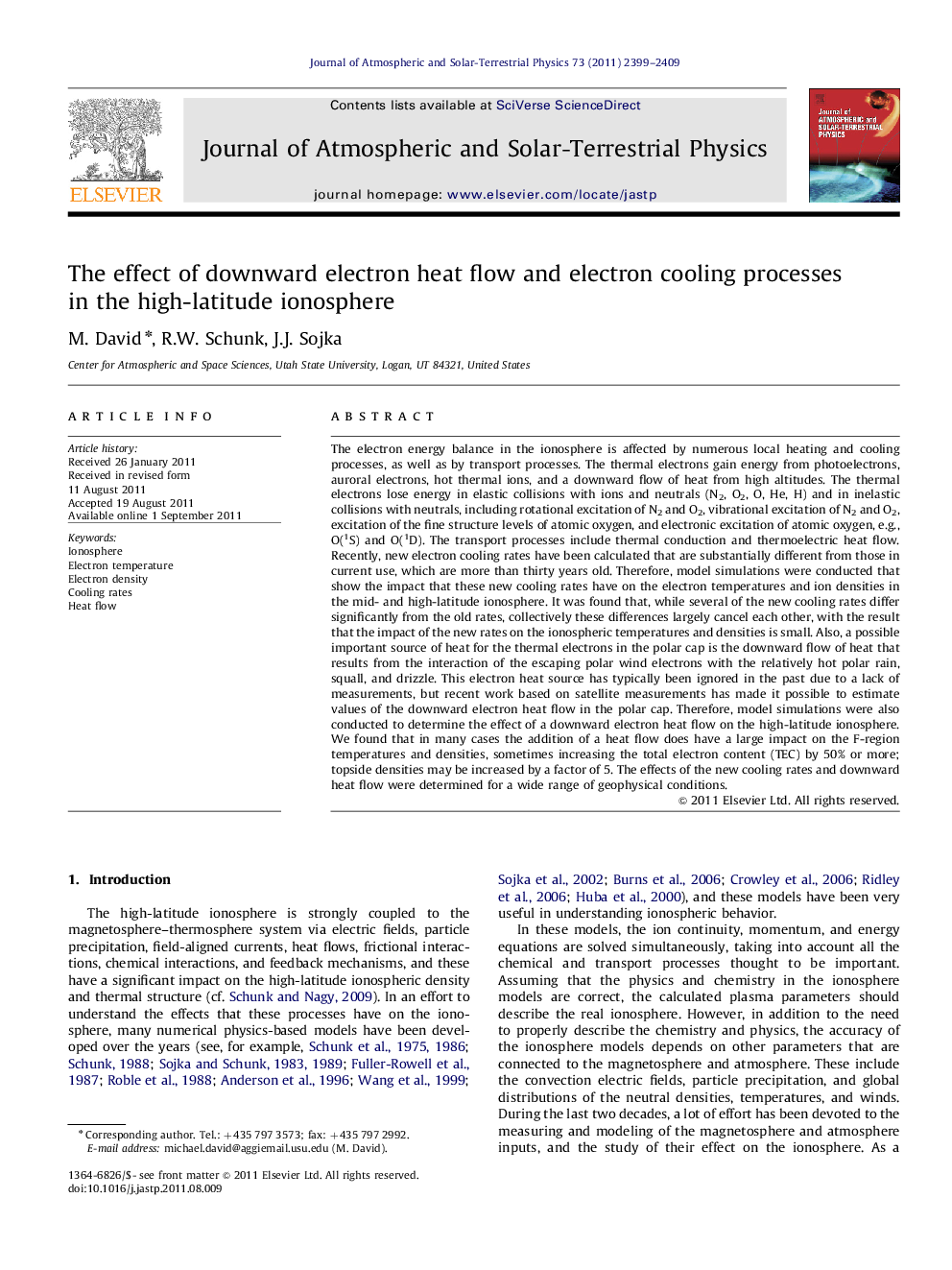| کد مقاله | کد نشریه | سال انتشار | مقاله انگلیسی | نسخه تمام متن |
|---|---|---|---|---|
| 1777153 | 1021726 | 2011 | 11 صفحه PDF | دانلود رایگان |

The electron energy balance in the ionosphere is affected by numerous local heating and cooling processes, as well as by transport processes. The thermal electrons gain energy from photoelectrons, auroral electrons, hot thermal ions, and a downward flow of heat from high altitudes. The thermal electrons lose energy in elastic collisions with ions and neutrals (N2, O2, O, He, H) and in inelastic collisions with neutrals, including rotational excitation of N2 and O2, vibrational excitation of N2 and O2, excitation of the fine structure levels of atomic oxygen, and electronic excitation of atomic oxygen, e.g., O(1S) and O(1D). The transport processes include thermal conduction and thermoelectric heat flow. Recently, new electron cooling rates have been calculated that are substantially different from those in current use, which are more than thirty years old. Therefore, model simulations were conducted that show the impact that these new cooling rates have on the electron temperatures and ion densities in the mid- and high-latitude ionosphere. It was found that, while several of the new cooling rates differ significantly from the old rates, collectively these differences largely cancel each other, with the result that the impact of the new rates on the ionospheric temperatures and densities is small. Also, a possible important source of heat for the thermal electrons in the polar cap is the downward flow of heat that results from the interaction of the escaping polar wind electrons with the relatively hot polar rain, squall, and drizzle. This electron heat source has typically been ignored in the past due to a lack of measurements, but recent work based on satellite measurements has made it possible to estimate values of the downward electron heat flow in the polar cap. Therefore, model simulations were also conducted to determine the effect of a downward electron heat flow on the high-latitude ionosphere. We found that in many cases the addition of a heat flow does have a large impact on the F-region temperatures and densities, sometimes increasing the total electron content (TEC) by 50% or more; topside densities may be increased by a factor of 5. The effects of the new cooling rates and downward heat flow were determined for a wide range of geophysical conditions.
► New electron heat loss rates are examined.
► New cooling rates have little impact on F-region densities.
► Downward electron heat flow is seen to be a very important parameter.
Journal: Journal of Atmospheric and Solar-Terrestrial Physics - Volume 73, Issue 16, October 2011, Pages 2399–2409